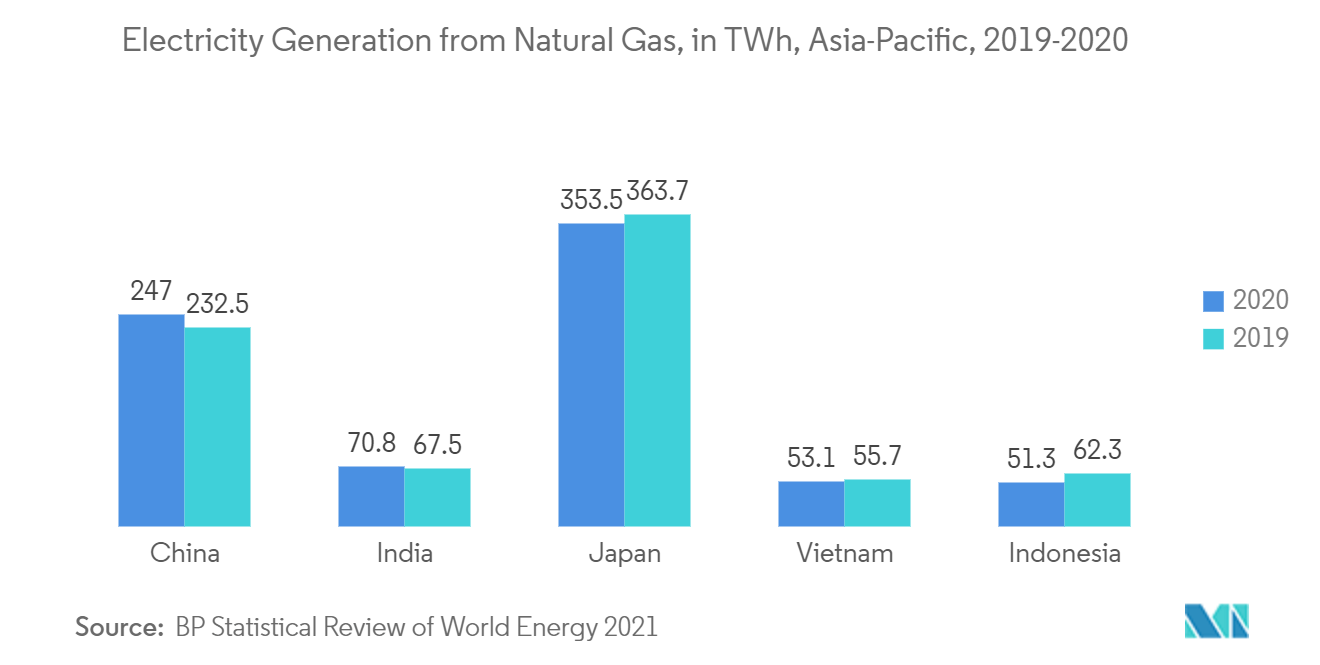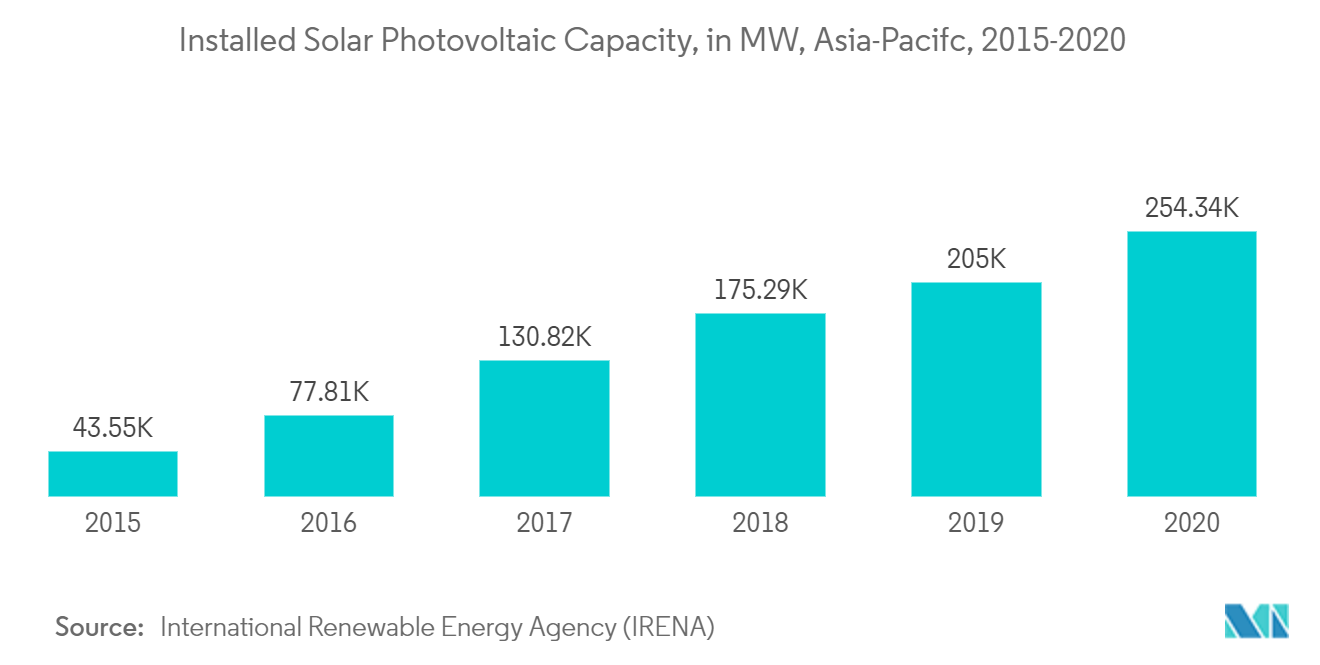Market Trends of Asia-Pacific Steam Turbine Industry
This section covers the major market trends shaping the APAC Steam Turbine Market according to our research experts:
Natural Gas Plants are Likely to Dominate the Market
- Natural gas plants do not directly use steam turbines, but combined-cycle plants, which is the most efficient method of natural gas-fired plants, use smaller megawatt turbines.
- An increase in the adoption of combined-cycle natural gas plants may drive the segment's growth, as it is a reliable energy source and is one of the prominent factors behind the demand for steam turbines.
- Electricity generation in China from natural gas increased to 247.0 terawatt-hours in 2020 from 232.5 terawatt-hours in 2019. Also, the share is expected to grow in the coming years as the country is looking for sustainable electricity generation through renewable energy sources and wants to get rid of its coal-fired power plants as they are responsible for most of the carbon emissions.
- Various natural gas and combined cycle power plants are planned in countries like China and India, which will drive the growth of steam turbines. For instance, scheduled to be completed in 2025, the Shanwei Haifeng Natural Gas Cogeneration Power Plant is a 920MW gas-fired power project in Guangdong, China. The project is expected to be developed in multiple phases.
- As renewable resources cannot provide energy around the clock, a component of natural gas-based plants in the energy mix can make way for a cleaner future.
- Most of the countries in the region are looking forward to changing their coal plants to gas plants. Therefore, there is a possibility of smaller steam turbines being used. This, in turn, is expected to boost the demand for natural gas plants during the forecast period.

Increase in Adoption of Solar Energy is Likley to Restrain the Market
- Increasing adoption of solar energy across significant countries in the region, such as China and India, may restrain the growth of the steam turbine market in the region during the forecast period.
- Asia-Pacific countries have an abundance of solar irradiance and receive solar energy throughout the year, creating many opportunities to exploit solar energy from the sunniest sites in the region. This factor, clubbed with foreign investment and extensive R&D projects to improve the technology, is responsible for the growth of the solar energy market in India.
- According to the International Renewable Energy Agency (IRENA), China's installed solar PV capacity was around 254.355 GW in 2020, up from 204.996 GW in 2019. The growth results from massive deployments of solar PV installations, particularly for utility projects. China's Center for Renewable Energy Development (CRED) still plans to have more solar PV installed capacity.
- In September 2020, the country commissioned Huanghe Hydropower Hainan Solar PV Park in China's remote Qinghai province. The plant will be built in five phases with an installed capacity of 2.2 GW.
- Similarly, in India, according to the International Renewable Energy Agency (IRENA), the installed solar PV capacity in India was around 38.98 GW in 2020, up from 34.86 GW in 2019, recording a growth of around 11% during the year. The development results from massive deployments of solar PV installations in India, particularly for utility projects. The Government of India has more plans to increase the solar PV installed capacity.
- Many countries are looking forward to generating electricity from solar energy and are on the verge of closing coal-fired power plants.
- Thus, the adoption of solar energy for power generation is expected to restrain the market's growth during the forecast period.


